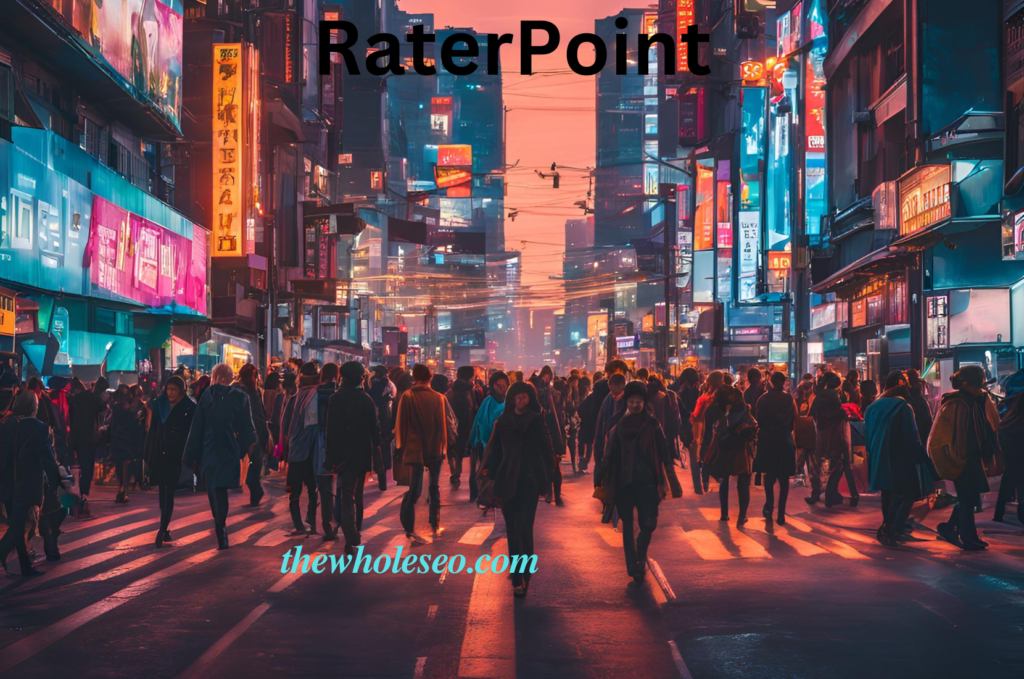
In the modern business landscape, effective feedback and evaluation systems are essential for growth and improvement. RaterPoint emerges as a powerful platform designed to streamline these processes, enabling organizations to gather, analyze, and act on feedback efficiently. This article explores Rater Point’s features, applications, benefits, and answers some frequently asked questions.
Understanding RaterPoint
RaterPoint is an advanced feedback management platform that caters to a wide range of organizations, from small businesses to large enterprises. Its primary goal is to enhance operational efficiency by transforming raw feedback into actionable insights. The platform utilizes sophisticated algorithms coupled with a user-friendly interface to provide organizations with valuable data that can drive improvements in products, services, and customer interactions.
Key Features of RaterPoint
1. User-Friendly Interface
RaterPoint boasts a simple and intuitive interface that encourages user engagement. This design ensures that both customers and businesses can navigate the platform effortlessly, leading to an increase in feedback submissions.
2. Customizable Surveys
One of the standout features of Rater Point is its ability to create customizable surveys tailored to specific projects or services. This flexibility allows organizations to gather relevant feedback directly aligned with their objectives.
3. Real-Time Data Analytics
The platform offers real-time analytics, enabling businesses to monitor feedback as it arrives. This immediate access allows for quick decision-making and fosters a proactive approach to customer engagement.
4. Actionable Insights
RaterPoint excels in transforming gathered data into actionable insights. Its analytical tools identify trends and sentiment patterns that guide strategic decisions, ensuring that organizations can respond effectively to user needs1.
5. Integration Capabilities
Rater Point seamlessly integrates with various Customer Relationship Management (CRM) and project management systems, enhancing collaboration across departments and maintaining smooth communication within organizations3.
Applications of RaterPoint
RaterPoint’s versatility allows it to be applied across various sectors:
1. Product Development
In product development, Rater Point captures customer feedback during different phases, allowing teams to make real-time adjustments based on user experiences.
2. Performance Evaluation
Human resources departments can utilize Rater Point for performance evaluations by collecting feedback from peers and supervisors, enhancing employee development strategies.
3. Customer Service Improvement
The platform aids customer service teams by analyzing customer sentiments and service interactions, leading to improved training programs and better customer relationship management.
4. Event Management
For organizations hosting events, Rater Point can gather post-event feedback to assess attendee satisfaction and identify areas for improvement in future events.
The Benefits of Implementing RaterPoint
Integrating RaterPoint into an organization offers numerous advantages:
Enhanced Decision-Making
Organizations gain access to data-driven insights that inform strategic development, aligning offerings with customer expectations.
Increased User Engagement
By providing easy-to-use feedback mechanisms, Rater Point boosts user engagement, which can lead to increased customer loyalty.
Cost-Effective Operations
RaterPoint enables organizations to refine their strategies without the high costs typically associated with traditional market research methods.
Foster a Culture of Improvement
By actively soliciting and acting on feedback, organizations demonstrate their commitment to improvement, fostering loyalty and trust among customers.
How Rater Point Transforms Feedback into Actionable Insights
The true power of RaterPoint lies in its ability to convert raw feedback into meaningful insights. Through advanced analytics—such as sentiment analysis—organizations can uncover underlying emotions and concerns within the data they collect. This capability allows businesses not only to address issues proactively but also to align their strategies with employee needs and customer expectations.
Frequently Asked Questions (FAQ)
What types of organizations can benefit from RaterPoint?
RaterPoint is suitable for a wide range of organizations including small businesses, large enterprises, non-profits, and educational institutions looking to enhance their feedback mechanisms.
How does Rater Point ensure data security?
RaterPoint implements robust security measures including data encryption and anonymous feedback options to protect user information while encouraging honest responses.
Can RaterPoint integrate with existing systems?
Yes, RaterPoint integrates seamlessly with popular CRM and project management tools such as Salesforce and Workday, facilitating smooth operations within existing workflows.
What kind of analytics does RaterPoint provide?
RaterPoint offers real-time analytics that include trend identification, sentiment analysis, and predictive statistics, allowing organizations to make informed decisions based on current data57.
Is training required to use RaterPoint effectively?
While RaterPoint is designed with a user-friendly interface that minimizes the learning curve, training sessions are available for teams who wish to maximize the platform’s capabilities.
Conclusion
RaterPoint stands out as a comprehensive solution for organizations aiming to improve their feedback collection and evaluation processes. With its advanced features such as customizable surveys, real-time analytics, and actionable insights, it empowers businesses across various sectors to foster a culture of continuous improvement. By integrating RaterPoint into their operations, organizations can enhance decision-making capabilities, increase user engagement, and ultimately drive growth in an ever-evolving marketplace




